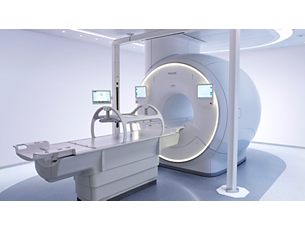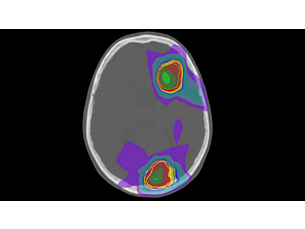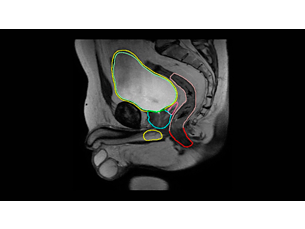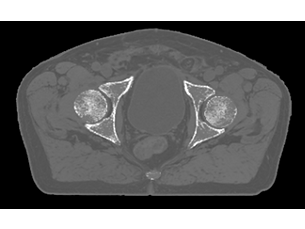- MR Simulation
-
Unleash the real power of MR simulation
MRCAT Head and Neck lets you plan radiation therapy using MRI only, without the need for CT. Within just one fast MR exam, MRCAT Head and Neck provides excellent soft-tissue contrast for target and OAR delineation, and CT-like density information for dose calculations. This not only extends the benefits of MRI’s excellent soft-tissue contrast to radiotherapy planning and adaptive strategies, but it also eliminates arduous, error-prone CT-MRI registration from the process. - Protocol
-
Consistent, accurate imaging protocol
Image acquisition is made easy by a dedicated ExamCard that includes a single, multi-contrast 3D T1W mDIXON scan, which is standardized to deliver consistent results and high geometric accuracy. The MRCAT Head and Neck scan can be acquired before or after contrast agent administration. Additional sequences, e.g. for delineation, can be easily added to the protocol to address your specific clinical needs. - Patient Comfort
-
Short scan times promote patient comfort
Head and neck cancer patients often find it difficult to endure an MRI exam, especially when immobilized by a thermoplastic mask. The high-resolution 3D MRCAT source scan is accelerated by Compressed SENSE and requires < 3 minutes to complete – while covering a large FOV (up to 380 mm in the feet-head direction). This promotes patient comfort, as well as productivity by minimizing time in the scanner. - Synthetic CT images using AI
-
Automatic generation of synthetic CT images using AI
MRCAT Head and Neck uses Artificial Intelligence (AI) for fast computation of MRCAT attenuation maps based on the mDIXON source scan. The resulting MRCAT density maps provide continuous Hounsfield Units for CT-like image appearance and are shown right at the MR console for immediate review. - Accuracy in dose planning
-
Accuracy in dose planning
MRCAT Head and Neck has been designed with strict radiotherapy accuracy requirements in mind. MRCAT image acquisition is geometrically accurate³ and MRCAT-based dose plans are as robust and accurate¹ as CT-based plans, promoting confidence in dose planning. - MR-CAT patient positioning
-
Rely on MRCAT-based patient positioning
You can use MRCAT data for patient positioning verification at the linac that is as accurate² as with conventional CT images. MRCAT’s continuous Hounsfield units, with the look and feel of CT, enable CBCT-based positioning using soft-tissue or bony contrast. You can also use MRCAT data to generate MR-based digitally reconstructed radiographs (DRRs) to allow for patient positioning using bony structures. - MR-Only radiotherapy
-
Put Philips MR-only radiotherapy to work today
To successfully bring MR-only radiotherapy planning into your clinical routine, we recognize that you must look beyond the imaging itself and address important steps such as patient marking, position verification, and quality assurance. We are prepared to support you throughout this process. To this end, we offer dedicated workflow descriptions, best practice sharing and tailored training support, designed to assist as you adopt this new treatment paradigm.
Unleash the real power of MR simulation
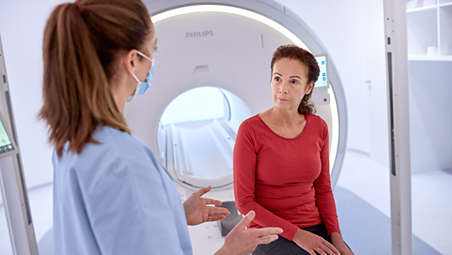
Unleash the real power of MR simulation

Unleash the real power of MR simulation
Consistent, accurate imaging protocol
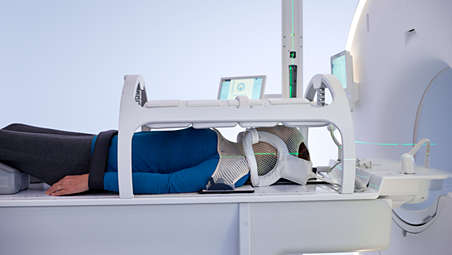
Consistent, accurate imaging protocol

Consistent, accurate imaging protocol
Short scan times promote patient comfort

Short scan times promote patient comfort

Short scan times promote patient comfort
Automatic generation of synthetic CT images using AI
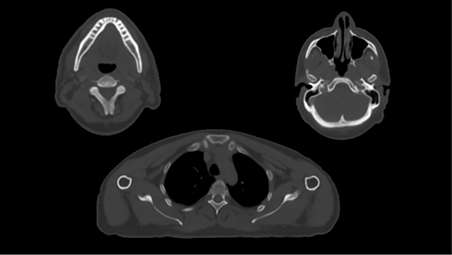
Automatic generation of synthetic CT images using AI

Automatic generation of synthetic CT images using AI
Accuracy in dose planning
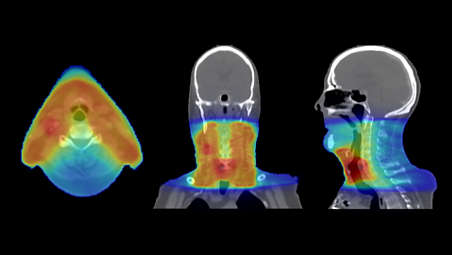
Accuracy in dose planning

Accuracy in dose planning
Rely on MRCAT-based patient positioning
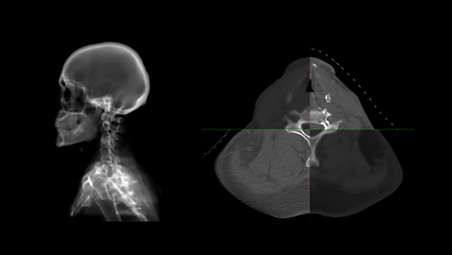
Rely on MRCAT-based patient positioning

Rely on MRCAT-based patient positioning
Put Philips MR-only radiotherapy to work today

Put Philips MR-only radiotherapy to work today

Put Philips MR-only radiotherapy to work today
- MR Simulation
- Protocol
- Patient Comfort
- Synthetic CT images using AI
- MR Simulation
-
Unleash the real power of MR simulation
MRCAT Head and Neck lets you plan radiation therapy using MRI only, without the need for CT. Within just one fast MR exam, MRCAT Head and Neck provides excellent soft-tissue contrast for target and OAR delineation, and CT-like density information for dose calculations. This not only extends the benefits of MRI’s excellent soft-tissue contrast to radiotherapy planning and adaptive strategies, but it also eliminates arduous, error-prone CT-MRI registration from the process. - Protocol
-
Consistent, accurate imaging protocol
Image acquisition is made easy by a dedicated ExamCard that includes a single, multi-contrast 3D T1W mDIXON scan, which is standardized to deliver consistent results and high geometric accuracy. The MRCAT Head and Neck scan can be acquired before or after contrast agent administration. Additional sequences, e.g. for delineation, can be easily added to the protocol to address your specific clinical needs. - Patient Comfort
-
Short scan times promote patient comfort
Head and neck cancer patients often find it difficult to endure an MRI exam, especially when immobilized by a thermoplastic mask. The high-resolution 3D MRCAT source scan is accelerated by Compressed SENSE and requires < 3 minutes to complete – while covering a large FOV (up to 380 mm in the feet-head direction). This promotes patient comfort, as well as productivity by minimizing time in the scanner. - Synthetic CT images using AI
-
Automatic generation of synthetic CT images using AI
MRCAT Head and Neck uses Artificial Intelligence (AI) for fast computation of MRCAT attenuation maps based on the mDIXON source scan. The resulting MRCAT density maps provide continuous Hounsfield Units for CT-like image appearance and are shown right at the MR console for immediate review. - Accuracy in dose planning
-
Accuracy in dose planning
MRCAT Head and Neck has been designed with strict radiotherapy accuracy requirements in mind. MRCAT image acquisition is geometrically accurate³ and MRCAT-based dose plans are as robust and accurate¹ as CT-based plans, promoting confidence in dose planning. - MR-CAT patient positioning
-
Rely on MRCAT-based patient positioning
You can use MRCAT data for patient positioning verification at the linac that is as accurate² as with conventional CT images. MRCAT’s continuous Hounsfield units, with the look and feel of CT, enable CBCT-based positioning using soft-tissue or bony contrast. You can also use MRCAT data to generate MR-based digitally reconstructed radiographs (DRRs) to allow for patient positioning using bony structures. - MR-Only radiotherapy
-
Put Philips MR-only radiotherapy to work today
To successfully bring MR-only radiotherapy planning into your clinical routine, we recognize that you must look beyond the imaging itself and address important steps such as patient marking, position verification, and quality assurance. We are prepared to support you throughout this process. To this end, we offer dedicated workflow descriptions, best practice sharing and tailored training support, designed to assist as you adopt this new treatment paradigm.
Unleash the real power of MR simulation

Unleash the real power of MR simulation

Unleash the real power of MR simulation
Consistent, accurate imaging protocol

Consistent, accurate imaging protocol

Consistent, accurate imaging protocol
Short scan times promote patient comfort

Short scan times promote patient comfort

Short scan times promote patient comfort
Automatic generation of synthetic CT images using AI

Automatic generation of synthetic CT images using AI

Automatic generation of synthetic CT images using AI
Accuracy in dose planning

Accuracy in dose planning

Accuracy in dose planning
Rely on MRCAT-based patient positioning

Rely on MRCAT-based patient positioning

Rely on MRCAT-based patient positioning
Put Philips MR-only radiotherapy to work today

Put Philips MR-only radiotherapy to work today

Put Philips MR-only radiotherapy to work today
Documentation
-
Technical data sheet (1)
-
Technical data sheet
- Technical data sheet (301.1 kB)
-
Technical data sheet (1)
-
Technical data sheet
- Technical data sheet (301.1 kB)
-
Technical data sheet (1)
-
Technical data sheet
- Technical data sheet (301.1 kB)
Specifications
- MRCAT Head and Neck
-
MRCAT Head and Neck Compatibility MR system - Ingenia MR-RT 1.5T and 3.0T
- Ingenia Ambition MR-RT 1.5T S and X
- Ingenia Elition MR-RT 3.0T S and X
- Ingenia MR-RT Evolution 1.5T and 3.0T
-
- MRCAT Head and Neck
-
MRCAT Head and Neck Compatibility MR system - Ingenia MR-RT 1.5T and 3.0T
- Ingenia Ambition MR-RT 1.5T S and X
- Ingenia Elition MR-RT 3.0T S and X
- Ingenia MR-RT Evolution 1.5T and 3.0T
-
- MRCAT Head and Neck
-
MRCAT Head and Neck Compatibility MR system - Ingenia MR-RT 1.5T and 3.0T
- Ingenia Ambition MR-RT 1.5T S and X
- Ingenia Elition MR-RT 3.0T S and X
- Ingenia MR-RT Evolution 1.5T and 3.0T
-
Related products
Alternative products
-
Ingenia MR-RT XD
- Experience the MRI difference
- Position with precision
- Coil solutions for RT imaging
- MR-only radiotherapy planning
View product
-
MRCAT Brain
- MR-only sim for primary and metastatic tumors in the brain
- Single-scan approach
- Automatic generation of synthetic CT images using AI
- Accuracy in dose planning
View product
-
MRCAT Prostate + Auto-Contouring
- MR-sim and contouring in 20 minutes
- Automatic generation of synthetic CT images
- Accurate contours with little to no user interaction
- Accuracy in dose planning
View product
-
MRCAT Pelvis
- MR-only sim for pelvic radiotherapy planning
- Robust, consistent imaging protocol
- Continuous Hounsfield units
- Accuracy in dose planning
View product
-
Ingenia MR-RT XD
The Philips Ingenia MR-RT XD platform harnesses the power and value of MRI for radiation therapy planning. It has been designed around the needs of radiation oncology, with ease-of-use, streamlined integration, and versatility in mind. Central to that concept is the ability to define a tailored approach with customizable functionality that meets your individual clinical, workflow, and budgetary requirements – all to provide better patient care.
View product
-
MRCAT Brain
MRCAT Brain clinical application allows the use of MRI as the primary imaging modality for radiotherapy planning of primary and metastatic tumors in the brain without the need for CT. Detailed anatomical information for contouring and attenuation maps for dose calculations are both obtained from a single, submillimeter resolution 3D T1W mDIXON MR sequence. Artificial Intelligence (AI) is used for fast computation of continuous Hounsfield units directly on the MR console.
View product
-
MRCAT Prostate + Auto-Contouring
As a plug-in clinical application to Ingenia MR-RT, MRCAT Prostate + Auto-Contouring provides attenuation maps and automated, MR-based contours of prostate and organs at risk in as little as 20 minutes – all in a repeatable ‘one-click’ workflow.
View product
See all related products
- ¹ The mean dose in the PTV does not differ more than 1% in MRCAT-based plans as compared to CT-based plans for 95% of the patient cases
- ² Accurate means: MRCAT-based patient positioning is within 2 mm accuracy for bony anatomy compared to CT-based patient positioning for 95% of cases
- ³ Accurate means: MRCAT provides < ± 1 mm total system geometric accuracy of image data in < 20 cm Diameter Spherical Volume (DSV) and < ± 2 mm total system geometric accuracy of image data in < 40 cm Diameter Spherical Volume (DSV)* * Limited to 32 cm in z-direction in more than 95% of the points within the volume
- MRCAT Head and Neck is not available for sale in all markets.
